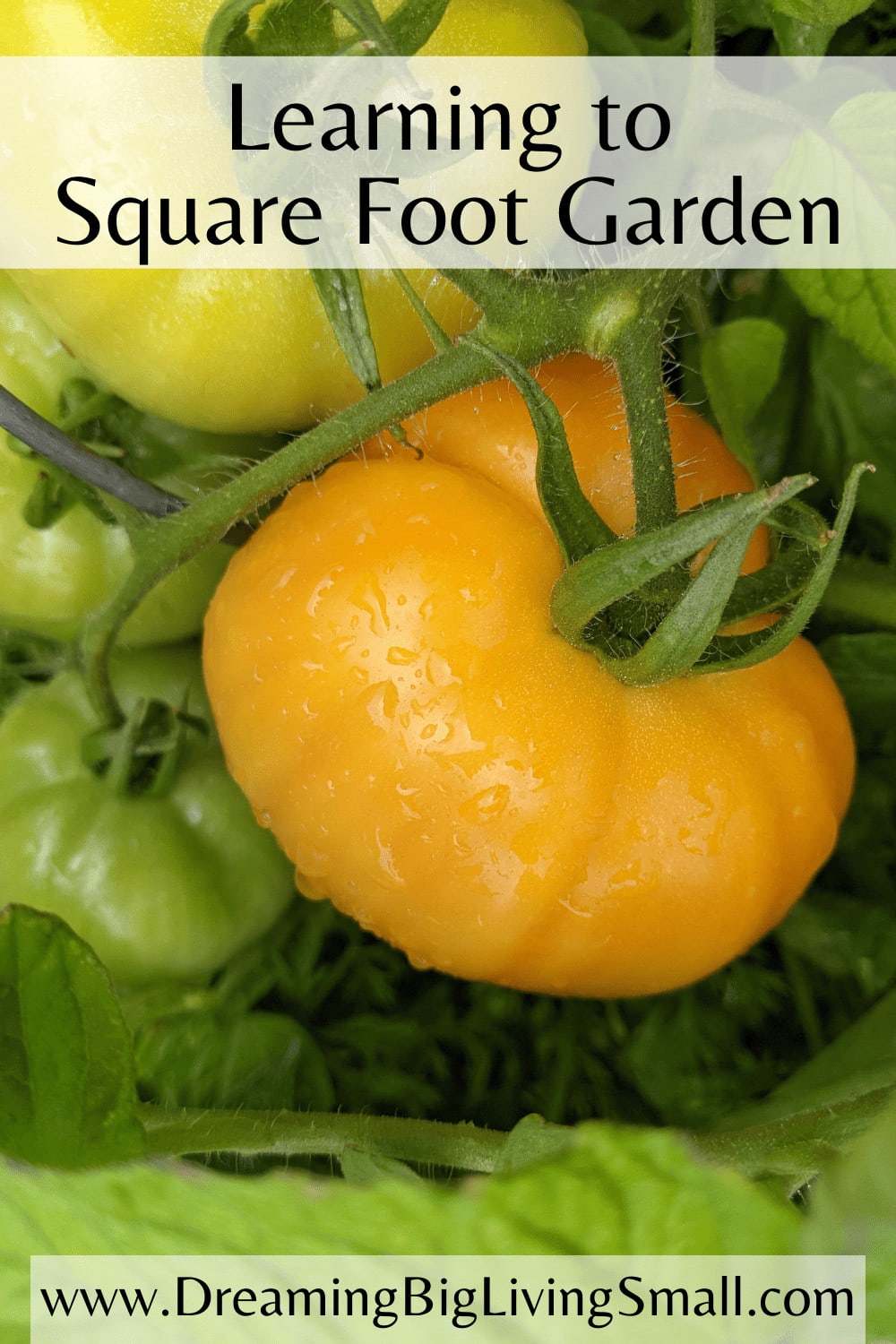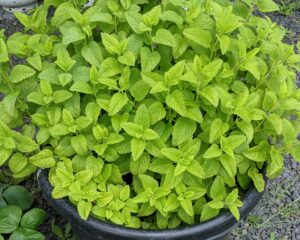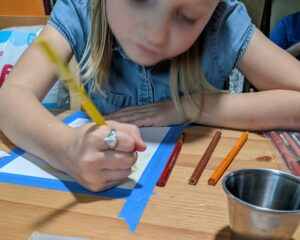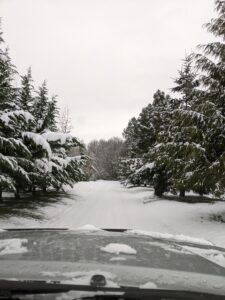There are so many methods of gardening. We’d like to share a little bit about our journey with square foot gardening and why we believe it’s worth giving a try.
Getting Started
Since I was a child, I loved to plant things. Whether it be flowers or fruits and vegetables, I loved having my hands in the dirt. A few months after Alex and I were married we decided to tear out the old shed and broke up the two concrete pads in our backyard.
That year we planted forty tomato plants, two mounds of zucchini, and a few other things. Despite our soil lacking good nutrients, those 40 little tomato plants were growing quite well until I left the sprinkler on for 16 hours straight one night. Whoops. We ended up with blossom end rot and we lost every single tomato plant.
Our zucchini plants thrived, and we had more zucchini than we or the neighbors could eat! That year I learned I needed a better method, better soil, and a timer so I wouldn’t forget to turn off the water again.
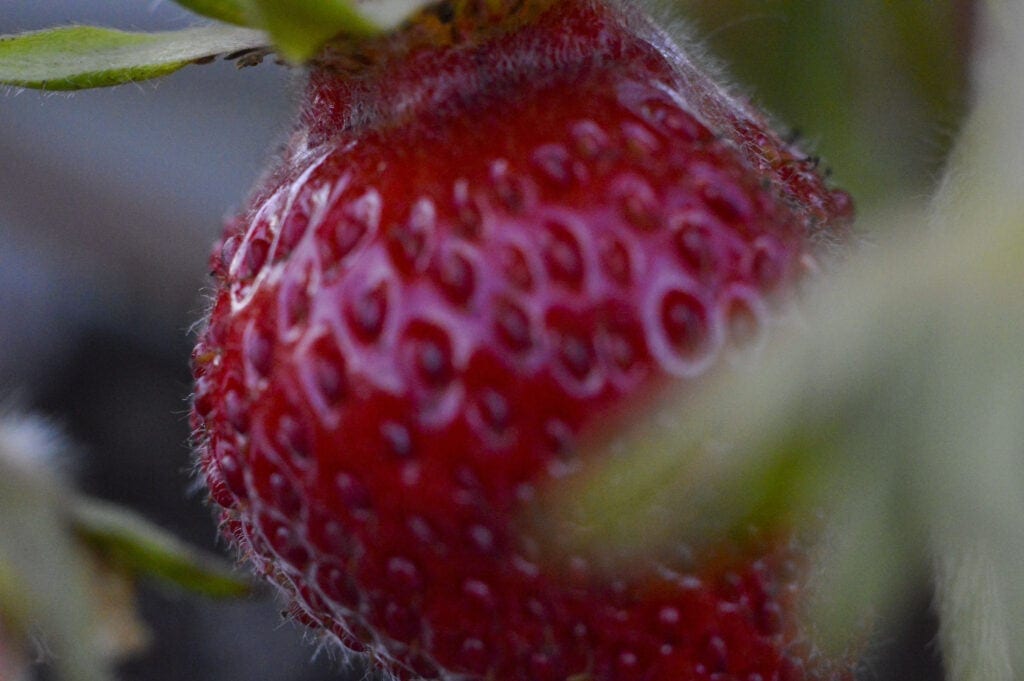
The next year we had our eight-month-old, and despite purchasing all the cinder blocks and getting a large load of composted horse manure, our raised beds never got put in. The year after that, we packed up our little family and moved to the coast at the end of the summer.
The land we bought needed a lot of clean-up work, but we worked to put a garden on the backside of the property. We had some successes and other failures. One of our failures was the neighborhood deer and their new babies. We had made sure the bigger deer couldn’t get in, but when the babies came along, they were sneaky and would manage to squeeze through small spaces and nibble away at all the fresh sprouts inside of our fenced garden area.
Another issue we had was light. Our property was surrounded by tall trees and many of our plants only got enough sun during the height of summer. We learned that we had to strategically place the plants that needed full sun on one side of the garden while planting things like greens on the side of the garden that got less sun.
Switching Gears
Three years later we moved again, thankfully this time it was just down the road to a building that we had converted into a live-in/work-in space. Since the building had previously been a full office building, it had a parking lot both in front and behind. We had intended on pulling up all the gravel and putting in a larger garden and yard in the back.
Due to time and cost, we built four raised beds using two layers of cinder blocks and used 8” x 16” x 2” pavers as caps so that I could sit on the edge and give them a finished look. I learned about a method called Square Foot Gardening. This method increases the amount your garden can produce in a small space and reduces the time spent pulling out weeds as the plants grow.
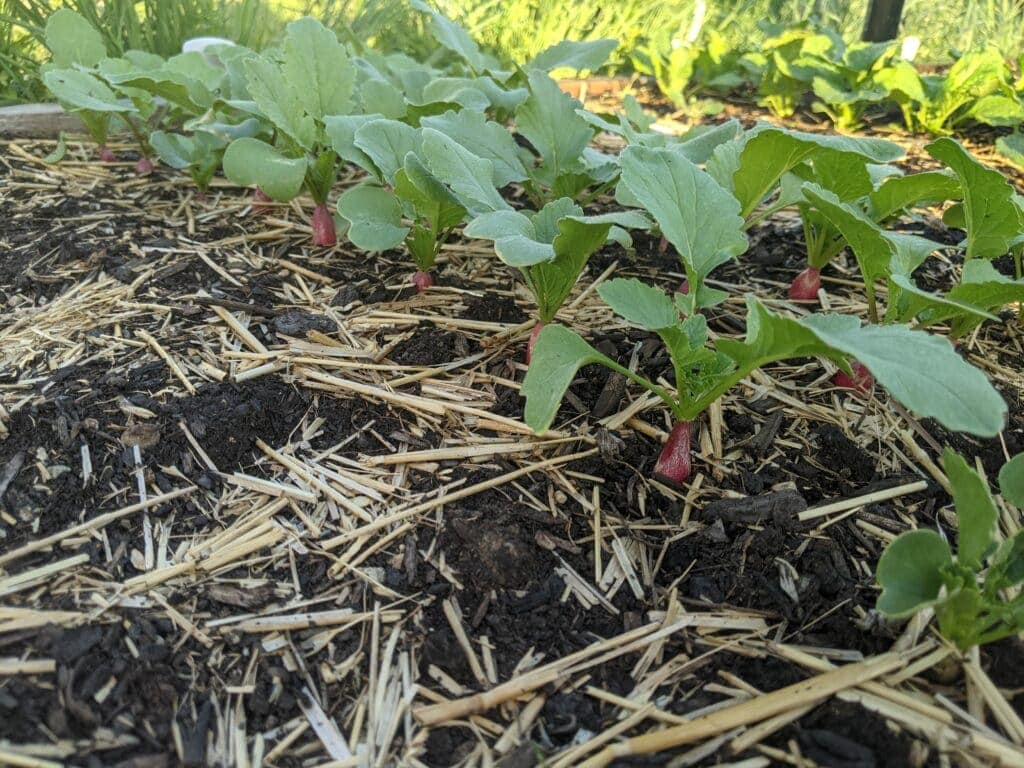
I would suggest getting the book Square Foot Gardening by Mel Bartholomew to learn more about it. Our new raised garden beds were more than tall enough, and the interior of the beds was 3.5’ x 3.5’ which made square foot gardening work easily for us.
It was nice to be able to sit on the sides and work on the garden. And while the depth wasn’t a necessity for most things, it was nice for things like carrots. We also planted beets, celery, zucchini, lettuce, spinach, and a bunch of different herbs.
Another Move
Yes, we’ve moved a lot and each time, we start over again, but this time was a little different.
February of 2020, I had this feeling to start getting seeds. There was only one problem… we didn’t have land of our own. We had intended to travel full time but after my grandmother’s health quickly started going downhill, we stayed around to help family and I’m grateful we did.
I talked to my mom, and we decided to clear out an old garden bed from when I was a kid, added more compost, and started planting seeds/plants. But there was not enough space in that bed, so I made another two raised beds, added more soil, and kept adding plants.
At the height of summer, my parents found a house that was big enough for grandma to move in with them. The best part though was it already had a large, fenced garden and a chicken coop with a covered run.
We continued taking care of and harvesting from our other garden while working to clear out the old rotten wood, cleaning up all the weeds, and putting in new garden beds here. We got it in just in time to plant a fall garden.
Things were going so well, we had beets, onions, pumpkins, peas, green beans, and more and out of the blue, we got a frost that took out a large portion of it. I was grateful for what we were able to salvage. Surprisingly the spinach and lettuce survived all winter including through 14 inches of snow.
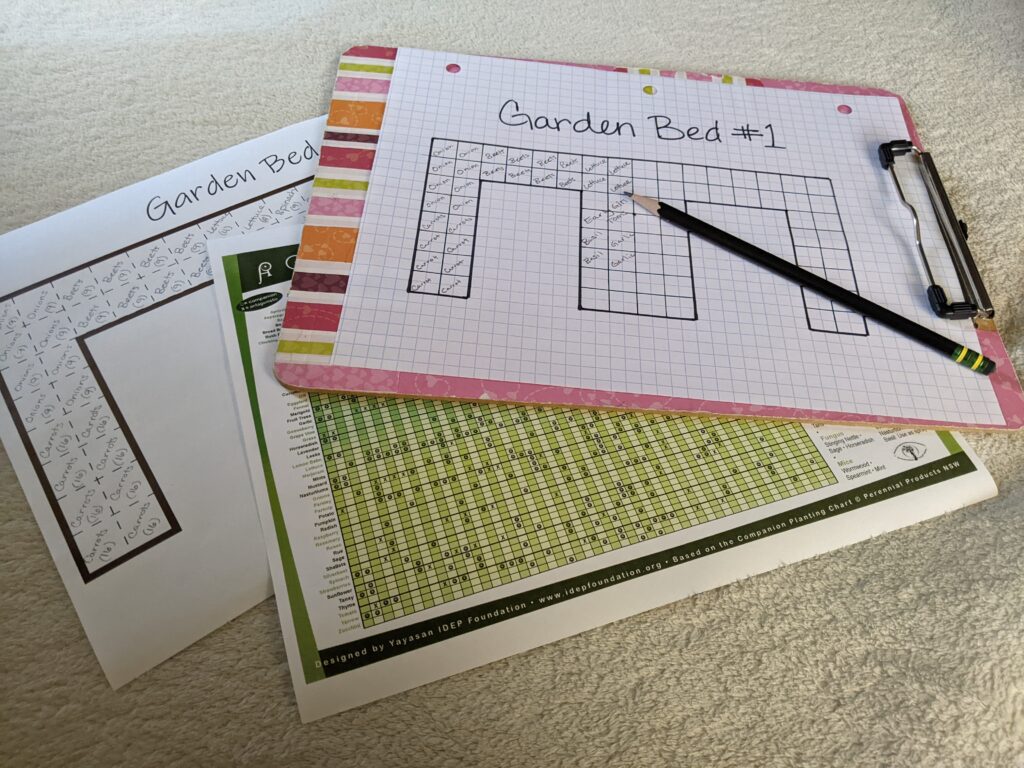
Garden Layouts
Before I plant a garden, I always make a list of all the things I want to plant, and the layout I would like to use. This makes it easy for me to see what plants are going where and what space I have left. It also helps with companion planting and keeping antagonist plants away from each other.
Despite planning ahead, I inevitably make small adjustments as I go. Planning my layout also allows me to put a record in my garden journal to take notes of what grew well, what didn’t, and how I can improve in the future.
While I was in the process of planning last year, I had been eyeballing a neat tool that makes it much easier to plant each square with proper distance for each type of plant and made thinning and weed pulling so much easier those first few months.
Our Experience
This last summer we had a decent amount of success with the garden. One thing that we had great success with was tomatoes. I’d planted ten Roma’s for canning, two early girls for slicing, two pear and three cherry varieties for salads.
We had an ample supply of all our tomatoes, though I easily could double the number of Roma for a yearlong supply of tomato products for our family. We canned some into soup, tomato sauce, others we dehydrated and freeze-dried. We also dehydrated and powdered spinach, lettuce, kale, and mustard greens to add to smoothies.
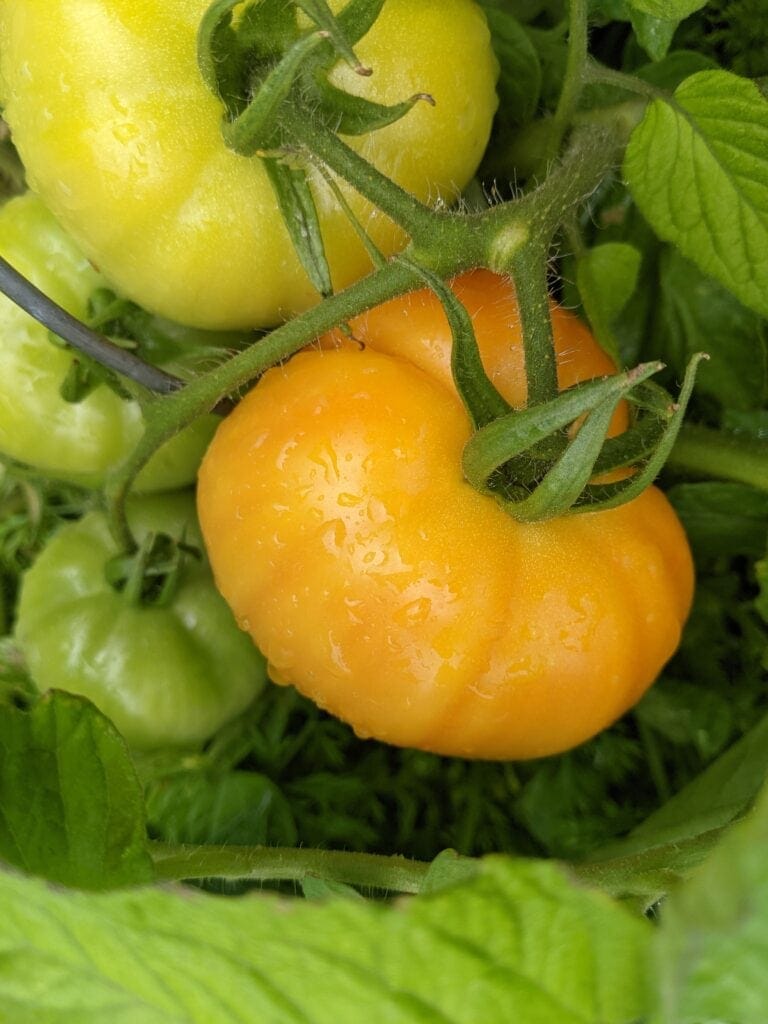
While we had a lot of success, we also had a few shortfalls.
One thing I learned is that you must check the variety of different plants you’re growing. My mom had purchased a package of GMO-free seeds and we decided to try some turnups that came in it. I didn’t bother looking up the variety.
I kept pulling up different plants as the greens got tall… yet the root wasn’t growing much. Finally, I pulled up the specific variety online only to learn that these were the kind grown for the young greens and not the roots. Unfortunately, because we’d waited so long, the greens were no longer tender, but the chickens liked it.
We also dealt with voles. From the little bit of research I’ve done, voles are similar to a mouse, but they live in old mole tunnels. They will eat your root vegetables from the bottom up. We thought we’d solve this problem with our taller raised bed of carrots and sugar beets by putting hardware cloth on the bottom.
This worked until the sugar beets and carrots got long enough that the tips stuck through the hardware cloth. The voles discovered them and in less than a month they devoured about 30 sugar beets that were the size of softballs. I had no clue this was going on as the voles had climbed into the bed, dug a hole that was covered by the large leaves, and were eating the plants from the bottom up.
Conclusion
While we still have a lot more to learn about gardening, there has been a lot that we’ve learned through trial and error.
You don’t have to have space for a large garden to get started, start small. I’ve seen gardens made from square buckets, window planters, and so much more. I would suggest you start smaller and work up to your goals.
It can be addictive to see how much you can grow but it can also be time-consuming to plant, water, weed, harvest, and preserve if you don’t know what you’re doing. I will say, one thing I always suggest is keeping seeds of things you like to eat as well as things that grow quickly.
When crap hits the fan, you will be grateful to be able to plant a garden and grow your food.
